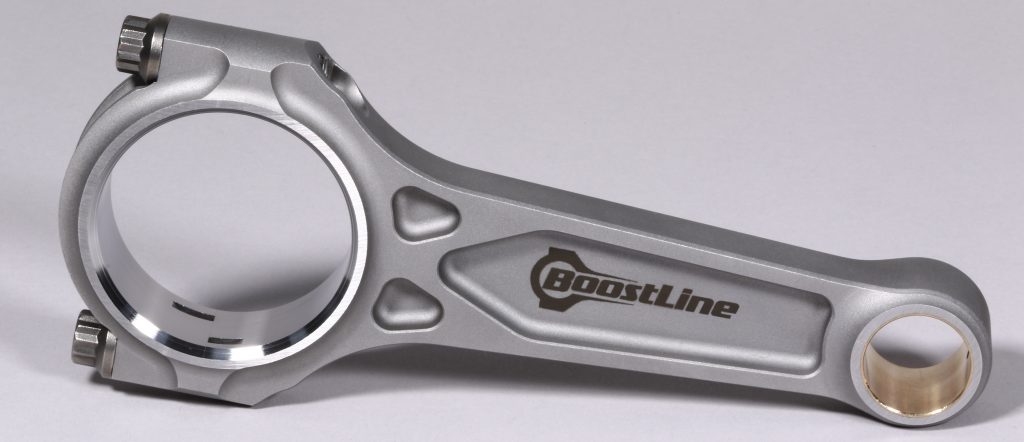
It’s no secret that adding a supercharger or turbocharger to your engine puts a ton of additional stress on its moving parts. And perhaps nowhere is that more acute than at the piston or, more specifically, at your connecting rods.
Many a forced-induction motor has suffered bent, broken, or otherwise distorted connecting rods as a result of too much cylinder pressure.
But it’s not just as simple as making stronger connecting rods. Nope, you’ve got to make them both strong and lightweight.
That’s why the Boostline connecting rods are so nifty. They use a hybrid design that mixes elements of I-Beam and H-Beam construction to produce a low-mass connecting rod that’s still incredibly stout. Made by the piston pros over at Wiseco, these Boostline connecting rods are practically tailor-made for high-power and high-rpm supercharged and turbocharged engines. In fact, for V8 applications, Boostline says these rods will handle up to 2,000 horsepower.

Best of all, you can get Boostline connecting rods for a lot of engine applications, including popular ones like GM LS, small/big Chevy, Ford Modular, Ford Ecoboost, Mopar Gen. III Hemi, Toyota 2JZ, Honda K20A/K20C and K24, and Subaru EJ20/EJ25 Turbo.

Comments